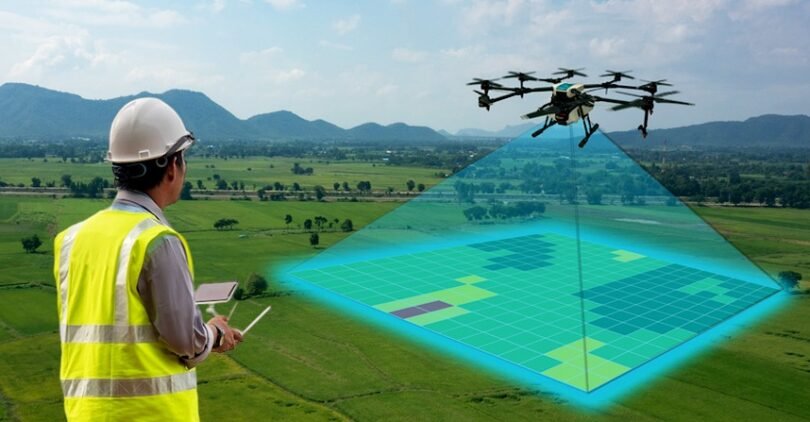Introduction:
Urban planning itself is a rapidly shifting field due to the advances in technology that enable planners and architects and engineers as well, although this article focuses on architects and designers to plan more effectively.
The drone mapping services stands as one of the macro-transformative advancements. In this vision, urban professionals acquire the ability to understand all of the complexity of urban morphology, and digital technology channels it into a reality-capture city model creation combining visualization, analysis, and design in ways unimaginable before.
Read on to know why drone mapping services are the future of urban planning.
Faster Data Collection and Processing
What makes drones an attractive tool for use in urban planning for collecting and processing data quickly? Conventional ways of land planning seem to be very expensive and time-consuming, and it is difficult to collect data, whether from foot or satellite images, which will require days to weeks.
They provide innovative drone mapping services that map large urban areas in only a matter of hours, realizing aerial imagery and 3D models.
With data collection times being faster, planning and decision-making processes can operate more quickly to respond in part to the growing speed of cities, where pressures for development are largely causing such increases.
Improved Accuracy and Detail
Accuracy is critical in urban planning, as even minor errors can lead to costly issues in design and implementation.
Especially in combination with autonomous drone flights, a process that is known today as drone mapping can produce extremely detailed and accurate data sets for specific areas, including high-resolution aerial images of point features such as buildings, roads, vegetation, or water bodies at resolution scales significantly higher than traditional satellite imagery.
Drone mapping services are precise, decreasing the chances of errors within the planning stage and helping guarantee that any development is premised on accurate data.
Cost Efficiency
Using drones for mapping is a faster, more inexpensive option over the traditional surveying techniques and data gathering. For large or complex urban areas, it can be expensive to hire human surveyors who move through the city block by block over time, gathering raw data with clipped GPS points.
However, drones are able to function with fewer personnel and collect data more quickly, which results in an overall significant cost reduction. Furthermore, considering the time and effort required to construct detailed maps and models that exist in the later stages of planning, the ability to mimic those high-resolution volumes earlier is beneficial financially.
Enhanced Urban Design and Visualization
The city planners in the Middle East and around the globe value drones as a robust tool that allows them to see possible layouts and designs. Through high-resolution aerial imagery and 3D models of smart cities, the level of urban environment representation is increased enormously to finally be able to provide a more immersive and accurate user experience.
Drone mapping services allow planners to experiment with different scenarios, visualize potential changes in the future, and identify how new developments would interface with pre-existing conditions. The city plans to also rely on drone mapping to help capture and transmit design ideas for a future virtual city model.
Improved Environmental Monitoring
Urban development is fast becoming a priority for planners across the globe. Drone mapping services can help monitor environmental parameters like air quality, vegetation health, water resources, etc.
This real-time information can be extremely useful in identifying areas that need environmental conservation or restoration and also helps to ensure new developments adhere to the protection of vulnerable ecosystems.
They can detect heat islands, or areas with increased temperatures within cities, using thermal cameras attached to drones, an invaluable insight for planners looking to lower the amount of heat buildup through future urban development and material choices. This, in turn, contributes to sustainable urban living.
Increased Safety
Automatically detecting ready-made solutions often occurs in hard urban environments to survey manually with costs that are also off the charts. Drones can also be dispatched to confined or dangerous places, such as construction sites, multi-story buildings, and disaster-prone areas.
Drone mapping removes the necessity of human surveyors to step into these areas, making data collection processes safer. Drones are able to survey damage in urban areas post-disaster, enabling planners to receive critical details of the disaster they need for reconstruction and recovery.
Better Data for Smart Cities
Drone mapping services come to the rescue, bringing you ultra-high-resolution data that is crucial for the evolution of smart city technologies. Whether in traffic pattern monitoring, public space management, or tracking the required maintenance in infrastructure, drones provide the precision and data frequency needed for smart city efforts.
Conclusion
Drone Mapping Services provides quicker and more precise as well as cost-effective data collection, allowing urban planners to create smarter and more sustainable cities. Drones are irreplaceable in advanced and futuristic urban development since with drones it is possible to see life projects, have updated monitoring of environmental impacts, and improve safety. Drone mapping will certainly be critical for the future of urban planning as cities expand and change.



